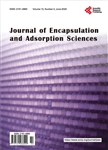Leydig Cells Encapsulation with Alginate-Chitosan: Optimization of Microcapsule Formation
Leydig Cells Encapsulation with Alginate-Chitosan: Optimization of Microcapsule Formation作者机构:Department of Anatomy Physiology and Pharmacology Faculty of Veterinary Medicine Bogor Agricultural University Bogor Indonesia Department of Chemistry Faculty of Mathematics and Natural Sciences Bogor Agricultural University Bogor Indonesia
出 版 物:《Journal of Encapsulation and Adsorption Sciences》 (封装与吸附期刊(英文))
年 卷 期:2012年第2卷第2期
页 面:15-20页
学科分类:1002[医学-临床医学] 100214[医学-肿瘤学] 10[医学]
主 题:Cell Encapsulation Chitosan Alginate Microcapsule Leydig Cells
摘 要:This research aimed to optimize the formation of microcapsules from alginate and chitosan for Leydig cells encapsulation. Alginate was used as the first coating agent while chitosan was the second layer. Various concentrations of alginate and CaCl2 were applied utilizing the extrusion method and the best concentration was determined based on their formation time, shape and diameter of microcapsules. Alginate microcapsule was applied with chitosan in various con- centrations. The best chitosan concentration was selected based on its mechanical stability. The results showed that the minimum concentration of alginate was 1.5% (w/v) with viscosity of 33.8 cPs, resulted to spherical microcapsules with diameters of 230 - 270 μm. The optimum concentration of chitosan as the second coating agent was 0.5% (w/v), resulted to spherical microcapsules with mechanical stability of 4 hours. Leydig cells were trapped inside the microcapsule with a density that is proportional to the concentration of cells used in the encapsulation.



